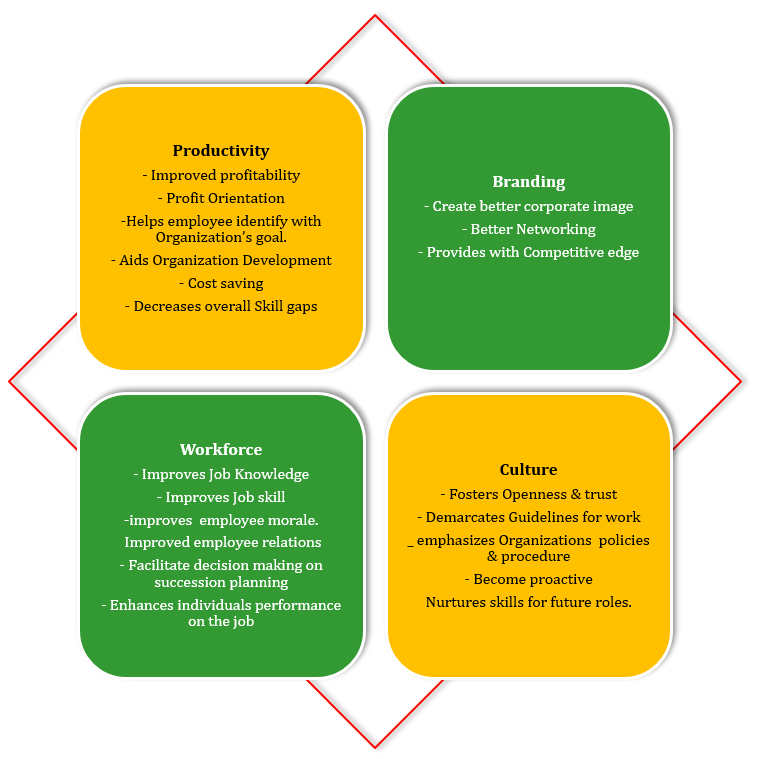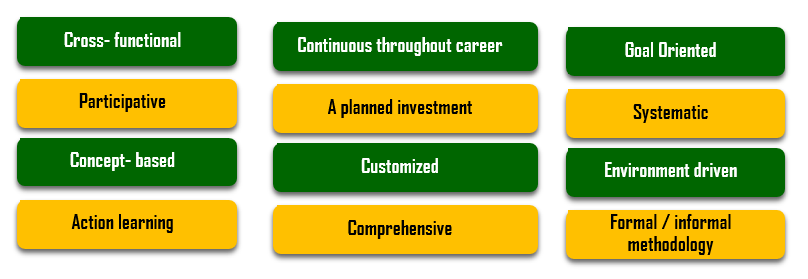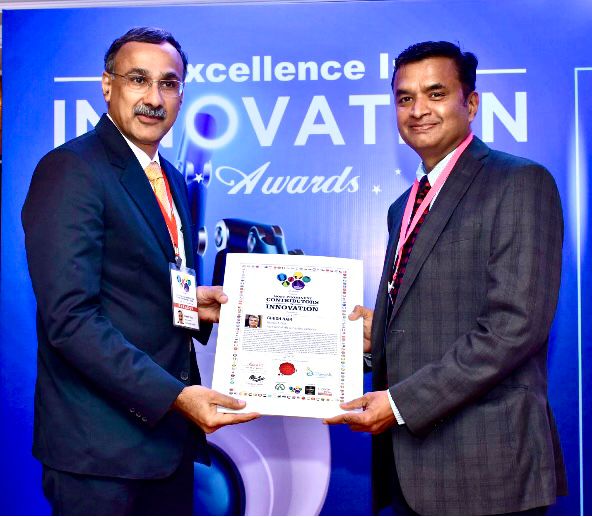Introduction
Training and development refers to the imparting of specific skills, in an attempt to improve current or future employee performance. Training enhances the employee’s ability to perform, usually by increasing confidence, improving attitude or helping develop his/her skills. Training comes at a cost whether it’s delivered in the classroom, online, offsite or on the job. However, an untrained or inadequately trained employee could result in a much greater risk and cost to a company.
Training and Development plays an important role in the effectiveness of organizations. Training has implications on productivity, health and safety at work as well as personality development. All organizations need to train and develop their staff skills on a continuous mode. Most of the organizations invest a lot of effort and other resources in training and development, thoroughly understanding the positive impact it renders. Such investments can take the form of employing specialist Trainers from outside or training the existing staff with certain skill sets to further educate others. Investment in training and development also entails obtaining space and maintaining equipment. It also means that operational personnel, employed in the organization’s main business functions, such as production, maintenance, sales, marketing and management support, must also direct their attention and effort from time to time towards supporting training development and delivery. Most of the technical training happens on the job while some may require a conscious effort focused on developing soft skills with the help of external services. However, making an investment in training and development programs is generally regarded as a good management practice to build on expertise and keep oneself updated on market trends.

PACE provides soft skill trainings on various attributes that are required to successfully deliver on the job , manage a team & handle unpredictable situations that may arise.


Why is there so much buzz around Training & Development?
Intellectual capital is fast becoming the asset base of Organizations. In the current global economy when Organizations are faced with rapid changes, the ability to continuously seek, adapt and apply new skills would be the order of the day. In such a dynamic situation, where the skills and knowledge of people are becoming redundant by the day, success in business and its growth would require special emphasis on learning, education and training that is relevant in the current scenario. It is advisable to define training programs for different sets of employees within the organization depending on specific requirements & implement it along with the follow- on activities.
| Learning Dimension | Training | Development |
|---|---|---|
| WHO | Non- Managers | Managers |
| WHAT | Technical / Mechanical operations | Theoretical/ Conceptual ideas |
| WHY | Specific Job Related information | General knowledge |
| WHEN | Short Term | Long term |
Employees tend to stay associated with organizations that are capable of building a strong Learning culture and prepare them for current and future roles. Organizations on the other hand are required to reskill and up-skill their employees in line with the changing Business environment. The key trends reflect the broadening role of Training and Development to deliver effective learning solutions as the situation warrants, therefore making it an extended arm of the Human Resource Management function. At PACE, we tend to align the Training programs as per the business requirements & changing marketing dynamics.

There is no one-size-fits-all when it comes to learning & development. Therefore we follow a layered approach to the learning framework. Such a framework shall receive coordinated responses, which shall in turn make the monitoring & evaluation process much more reliable.









